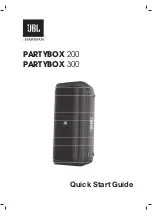
DC CONTROL
LIQUID COOLED
ENGINE UNITS
SECTION 4.1
DESCRIPTION AND COMPONENTS
PART 4
Page 61
Figure 8. Engine Cranking Circuit
LOW OIL PRESSURE SWITCH:
The low oil pressure (LOP) switch has normally-
closed contacts which are held open by engine oil
pressure during cranking and running conditions.
Should engine oil pressure drop below approximately
8-12 psi, the switch contacts will close. control board
action will then effect an automatic engine shutdown
and the fault indicator lamp (L1) will turn on.
HIGH COOLANT TEMPERATURE SWITCH:
The high coolant temperature switch (HWT) has nor-
mally-open contacts. Contacts are thermally actuated.
If engine coolant temperature should exceed approxi-
mately 284° F. (140° C.), control board action will
shut the engine down. The fault indicator lamp (L1)
will then illuminate.
Figure 9. Oil Pressure & Coolant Temperature Circuit
LOW COOLANT LEVEL SENSOR:
It is possible that engine coolant level might drop low
enough so that the high temperature switch is no
longer immersed in the liquid coolant. If this happens
engine temperatures could increase rapidly but the
temperature switch would not sense the high temper-
ature condition and the engine would continue to run.
To prevent this occurrence, a low coolant level sensor
is provided. The sensor is immersed in cooling sys-
tem liquid. If coolant level drops below the level of the
low coolant level sensor, the device will complete a
Wire 85 circuit to ground. Engine shutdown will occur.
FUEL SOLENOID:
The fuel solenoid (FS) provides a positive shutoff of
fuel when the engine is not running. The solenoid is
energized open by 12 volts DC (Wire 14); it is de-
energized closed.
Figure 10. Fuel Solenoid (FS)
ENGINE IGNITION SYSTEM:
The control board acts as the “ignition switch”, i.e., it
turns the ignition system on for startup and turns the
system off for shutdown. During startup, a crank relay
(K1) on the control board energizes, its contacts
close, and 12 volts DC is delivered to the ignition coil
via Wire 14. The ignition system consists of (a) elec-
tronic ignition distributor, (b) spark plug wires, and (c)
spark plugs.
See Figure 11. Battery voltage is available to the con-
trol board, via Wire 15A. During cranking and running
conditions, circuit board action delivers the battery
voltage to the electronic ignition distributor. High volt-
age output from the distributor is delivered through
the rotor and cap to the individual spark plugs in a
timed sequence.
Figure 11. Engine Ignition Distributor Schematic
ELECTRONIC
IGNITION
DISTRIBUTOR
14
14
+ -
14
0
FUEL SOLENOID
GROUND
+
_
FUEL REGULATOR
0
85
85
85
0
0
0
LOW OIL
PRESSURE SWITCH
HIGH COOLANT
TEMPERATURE
SWITCH
LOW COOLANT
LEVEL SENSOR
GROUND
12 VOLT
BATTERY
RED
+
BLACK
-
16
CONTROL CONTACTOR
STARTER MOTOR
GROUND
Summary of Contents for 4721
Page 60: ...PART 3 Page 56 V TYPE PREPACKAGED TRANSFER SWITCHES SECTION 3 4 DIAGNOSTIC TESTS...
Page 98: ...PART 4 Page 94 DC CONTROL LIQUID COOLED ENGINE UNITS SECTION 4 4 DIAGNOSTIC TESTS...
Page 112: ...PART 9 Page 108 ELECTRICAL DATA WIRING DIAGRAM 1 5 LITER LIQUID COOLED ENGINE DRAWING 0E0343 B...
Page 115: ......
















































